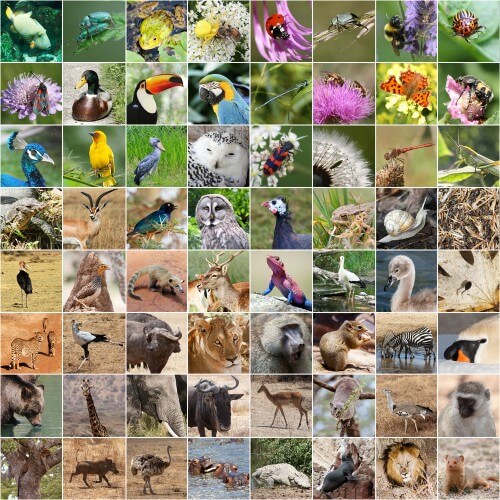A new study presents a different view to reassessing a healthy environment. From corals through fish, marine and terrestrial mammals to carnivores. From the azures to the cedars - the entire world's biodiversity is under attack.

One of the accepted ways to determine the health of the natural environment is by counting species. Animals and plants are counted in a certain habitat and the greater the number of species - the healthier the environment. At least that was accepted until today.
But a new study presents a different view to reassessing a healthy environment. From corals through fish, marine and terrestrial mammals to carnivores. From the azures to the cedars - the entire world's biodiversity is under attack. Numerous scientific studies for decades document the way in which the environment is damaged and the serious situation in which species are found, a situation that arises due to the destruction of habitats, climate changes, pollution, invasion of foreign species and overexploitation of resources.
So far things are known and known. That is why a new report to be published in "Science" by a professor from the University of Vermont in collaboration with the University of Maine and St. Andrew from Scotland seems surprising. The researchers examined data from hundreds of observations and studies around the world - from the poles to the equatorial regions, from the oceans and the continents. The findings are surprising because in most places the number of biological species has not changed. Furthermore, in certain places there was an increase in the number of species.
is that so? After all, in light of the global crisis according to which extinction takes place, there should have been a decrease in the number of local species in any given area. This is not how the researchers' findings appear. On average, the number of recorded species remains constant over time. In sixty out of one hundred sites there was an increase in the number of species and in forty there was a slight decrease, in all the sites the changes were small and no rapid and significant changes in the number of species were found.
However, almost eighty percent of the populations the team tested showed significant changes in species composition. On average, ten changes per decade were measured, a change that was higher than model predictions. In other words: the new report shows a large species turnover in habitats around the world, which creates new biological populations. According to the researchers: "Right under our noses in a place that was surveyed a decade or even a year ago, a new population of plants and animals is forming."
Not all the reasons for the changes are clear, but their effects on conservation activities and policies
Nature protection is important and significant. Conservation science and planning has focused on the protection of endangered species more than on the combined changes between plants and animals. According to the study: "There is a need to implement a policy that focuses on identifying species and not just their number. The number of species in a certain site is not necessarily the correct measure of environmental changes.'
The researchers cite as an example the distribution of coral species that are replaced by algae. This turnover will keep the number of biological species constant but will harm the fishing and tourism industries. The giant shoals of anchovies in the oceans are disappearing, but jellyfish populations are flourishing.
The researchers examined hundreds of reports and surveys conducted since the mid-nineteenth century, and mainly surveys from the last forty years. All of them show a rapid extinction of many species that is driven by many reasons and forces, when the result is: a planet of weeds" ("planet of weeds").
Many invasive species or successful "colonists", the most prominent of which are rats, ants, "wild" grass species and climbers, these also destroy everything around them. Added to the invaders are imported species that turn large areas into "agricultural deserts", where a single crop grows that does not contribute to the biological diversity in its environment.
The trend of uniformity (homogeneity) that exists throughout the world causes changes in biological diversity, which in most cases constitute a retreat and damage to the natural environment.
One of the significant causes of changes in biological diversity is the climatic factor (below is the main reason why I brought these things up): on May XNUMX, the White House published the "National Climate Assessment" and in it the recognition that: "As a result of the warming caused by human activity, Many species are facing disappearance from large areas, which will cause harmful and unrecognizable environmental changes."
The new study gives renewed validity to an alarming situation and according to the researchers: "It is necessary to expand the focus on research and planning to prevent the loss and changes of biological diversity."
And as we have already said: the time has come that instead of controlling the environment for the sake of the human population, there will be control of the human population for the sake of the environment.
